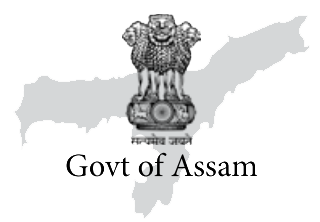One of the most awaited festivals in the composite life of the people of Assam is Durga Puja. The advent of autumn brings in festivities in the air for the people across the country: Durga Puja being the most important in Eastern India. From the historic and religious Shakti shrine of Kamakhya to the furthest corners in Sadiya, Dhubri and Cachar, the puja festivities take a universal phenomenon during this time of the year.
Artistes or sculptors with a rich legacy shape Goddess Durga’s idols in more ways than one. It is among the most awaited surprises for devotees. However, one idol in central Assam’s Nagaon district stands apart from the rest in its make and composition, but is devoid of any surprise. Whereas idols across the country are made of clay and hay, this idol in Puranigodam in the district is made of wood. Again, whereas idols are made and immersed in water on Dushhera each year, this idol in question has stood the test of time since 1901 when it was made by a legendary carver Leshadhar Sarma also known as Lerela Khanikar (Lerela, the Sculptor). This puja and the place have now turned into an attraction for its uniqueness.
Legend has it that the sculptor was in the business of making idols. Once in the year 1900, he made an idol and asked his brother Durga Sarma to sell it to the locals at a princely sum of ₹ 10 while he embarked on a visit to Amolapatty in Nagaon, then under British rule, to conduct a puja there. Upon his return after four days, he found the idol at his workshop. His brother informed him that because of paucity of funds, the locals could not afford to purchase it. It was then Lerela realised the futility of his work which has gone unsold. Others, however, have a different tale to tell. They say that the sculptor would always be at pains during the immersion because all his creations would be consigned to water with no trace of his creativity left beyond an ephemeral time frame. It was then that he decided that there can be a permanent idol which need not be immersed and can outlive a maker’s life.
In the same year, he started working on making idols of Goddesses Durga, Saraswati, Laxmi and that of Kartik and Ganesh (sons of God Shiva) using special wood from the stone apple tree. “My father told me that we had a garden in the backyard where there were huge stone apple trees. Because the wood of this tree has a special quality, my great grandfather decided to use them while making these idols,” says Jogendra Sarma, a fourth-generation member of the Sarma household. “I think he was right. Even after 101 years, nothing has happened to these idols. But to make the idol of Mahisashur, the demon, he used a piece of wood which he found floating in the river Kolong next to the temple, which, many say, he dreamt of the previous night,” adds Jogendra.

In 2001, when the special idol completed a centenary, writer and litterateur Mamoni Roysom Goswami came to the temple and wrote of her experience thus: “I am overwhelmed to see these idols carved out of wood. This is surreal. I bow my head in deference to the carver. This will be a memory of a different kind in my life.”
The preservation of the idols, also, has a history of its own. Immediately after the puja is over, the Sarma household would use a special paste made of firefly mud which would then be rubbed on a cloth to cover these idols. They would then be kept in their house till the time of the next puja. They would then be uncovered, freshly painted and draped with new clothes donated by devotees.
“This puja has given us a unique place in the cultural and spiritual firmament of Assam. During the days of the puja, Puranigodam becomes a rendezvous of culture and faith. People of all faiths come here and donate liberally. We generally do not collect donation. to organise this puja,” says Pulin Hazarika, a senior citizen and retired headmaster of a school.
To tap its growing importance, the puja organisers encouraged hosting of a children book fair near the temple beginning 1996. It is being credited as the first ever children book fair held anywhere in Assam. “It has been organised continuously since 1996. Even during the Covid years, it was held on an online basis, although the scale was much smaller. As far as I know, this is the first ever children’s book fair in Assam,” says Dulal Bora, a children literature enthusiast. “We want parents to give books to their children instead of toys and toy pistols. This fair has created an amalgam of literature, culture, and spirituality in this place.”
Some are, however, worried that unless a scientific preservation method is used, this happy story may have an anti-climax. “Even though we keep these idols after the puja in a room inside the temple. Yet, we live in a constant fear of it being stolen or being damaged due to natural or any other reason. We want the Government of Assam to assist us. We have applied for a grant under the Asom Darshan Scheme. We are hopeful,” says Mintu Sarma, president of the puja committee.












